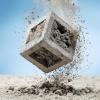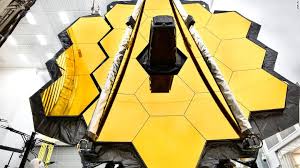
Breaking News
 Elon Tells Rogan the Real Reason Democrats are Prolonging the Government Shutdown [WATCH]
Elon Tells Rogan the Real Reason Democrats are Prolonging the Government Shutdown [WATCH]
 Newsom: Trump Is Trying to Rig the Election -- He Knows GOP Will Lose
Newsom: Trump Is Trying to Rig the Election -- He Knows GOP Will Lose
 There is zero justification for the Department of Justice's silence while the most serious...
There is zero justification for the Department of Justice's silence while the most serious...
 Gabbard Says Trump Has Ended America's Era Of 'Regime Change'
Gabbard Says Trump Has Ended America's Era Of 'Regime Change'
Top Tech News
 The 6 Best LLM Tools To Run Models Locally
The 6 Best LLM Tools To Run Models Locally
 Testing My First Sodium-Ion Solar Battery
Testing My First Sodium-Ion Solar Battery
 A man once paralyzed from the waist down now stands on his own, not with machines or wires,...
A man once paralyzed from the waist down now stands on his own, not with machines or wires,...
 Review: Thumb-sized thermal camera turns your phone into a smart tool
Review: Thumb-sized thermal camera turns your phone into a smart tool
 Army To Bring Nuclear Microreactors To Its Bases By 2028
Army To Bring Nuclear Microreactors To Its Bases By 2028
 Nissan Says It's On Track For Solid-State Batteries That Double EV Range By 2028
Nissan Says It's On Track For Solid-State Batteries That Double EV Range By 2028
 Carbon based computers that run on iron
Carbon based computers that run on iron
 Russia flies strategic cruise missile propelled by a nuclear engine
Russia flies strategic cruise missile propelled by a nuclear engine
 100% Free AC & Heat from SOLAR! Airspool Mini Split AC from Santan Solar | Unboxing & Install
100% Free AC & Heat from SOLAR! Airspool Mini Split AC from Santan Solar | Unboxing & Install
 Engineers Discovered the Spectacular Secret to Making 17x Stronger Cement
Engineers Discovered the Spectacular Secret to Making 17x Stronger Cement
NASA unfolds James Webb Telescope's huge mirrors in deployment test

Ahead of its launch next year, James Webb is currently in the midst of an exhaustive series of tests to make sure that it will work properly once it gets up there. After all, it's a bit tricky to send a mechanic 1.5 million km to take a look if something goes wrong.
The latest of these tests focused on making sure the spacecraft's mirrors unfold in the right way. At an impressive 6.5 m (21.3 ft) wide, Webb has the largest mirror ever launched into space, so to fit in the rocket fairing for launch it needs to tuck its wings in. Only once it's safely in space will it stretch out to full size.
In early March, NASA conducted a full test of this deployment system. Using the internal electronics system, the two side mirror arrays were unfolded to form the full mirror surface. Of course, here on Earth is a very different environment than in space, so for this test special equipment had to be suspended from the ceiling to support the weight of those wings as they moved. When it's actually go-time, none of that will be needed, since gravity won't be a factor.



